Shrubs with berries: 15 of the best varieties for brilliant fall color
Shrubs with berries are a good source of food for birds as well as a stunning ornamental feature in the garden
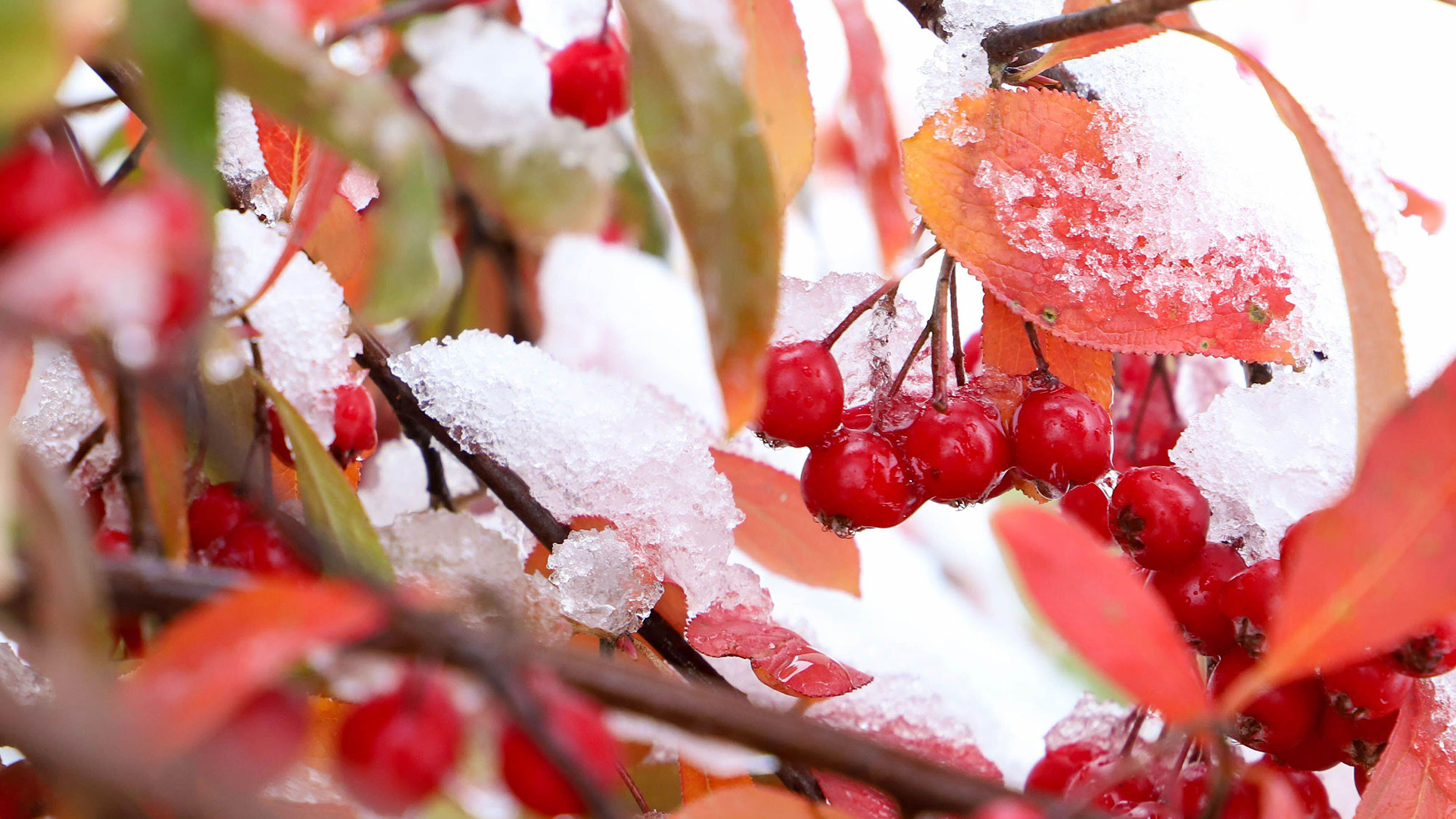

By choosing shrubs with berries, you can add a whole new palette to the garden with different layers of color and texture.
From the visual treats of brilliant, richly-colored berries best left for birds to those that have the added bonus of being edible for humans, there’s a wonderful array of plants with autumn berries of varying sizes. And, some shrubs really come into their own when they produce their jewel-like bounty, having been relatively shy and retiring for most of the year. Skimmia is a good example of a reliable evergreen that is far more interesting once the berries arrive.
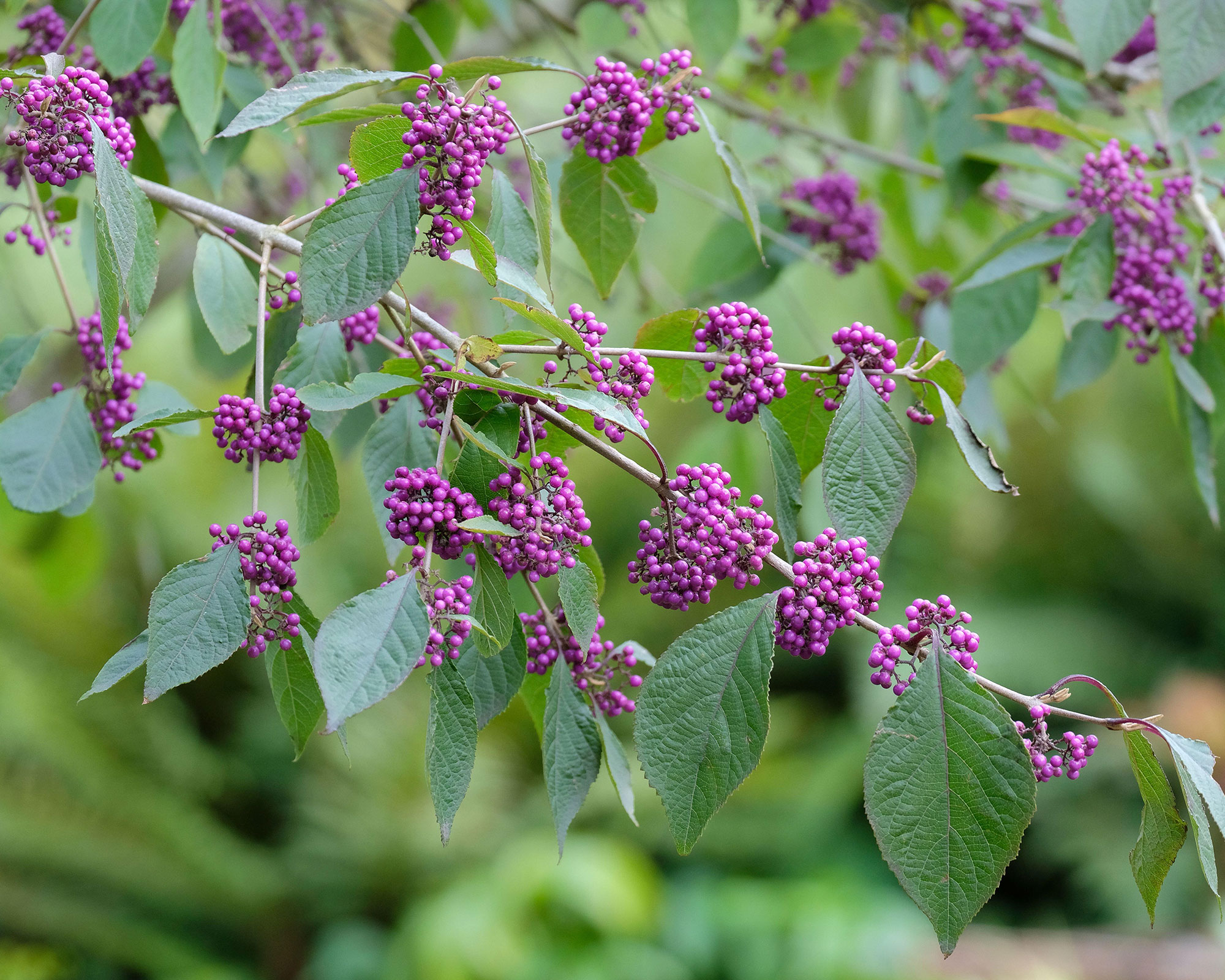
There’s a whole host of shrubs that are cloaked in glorious, colored berries in fall and winter. One such dramatic example is the beauty berry, Callicarpa bodinieri giraldii ‘Profusion’
Choose from these beautiful shrubs with berries to brighten your backyard
Our selection of plants with berries is divided according to color, so you can choose one that perfectly enhances the landscaping with shrubs ideas in your backyard.
It's worth remembering, too, that berries are not always guaranteed. Some species of shrubs with berries need male and female varieties to be planted together in order for the flowers to produce berries. So, pay particular attention to whether your chosen shrub is self-fertile and take into account its specific planting requirements.
Red and orange berries
1. Viburnum opulus 'Compactum'
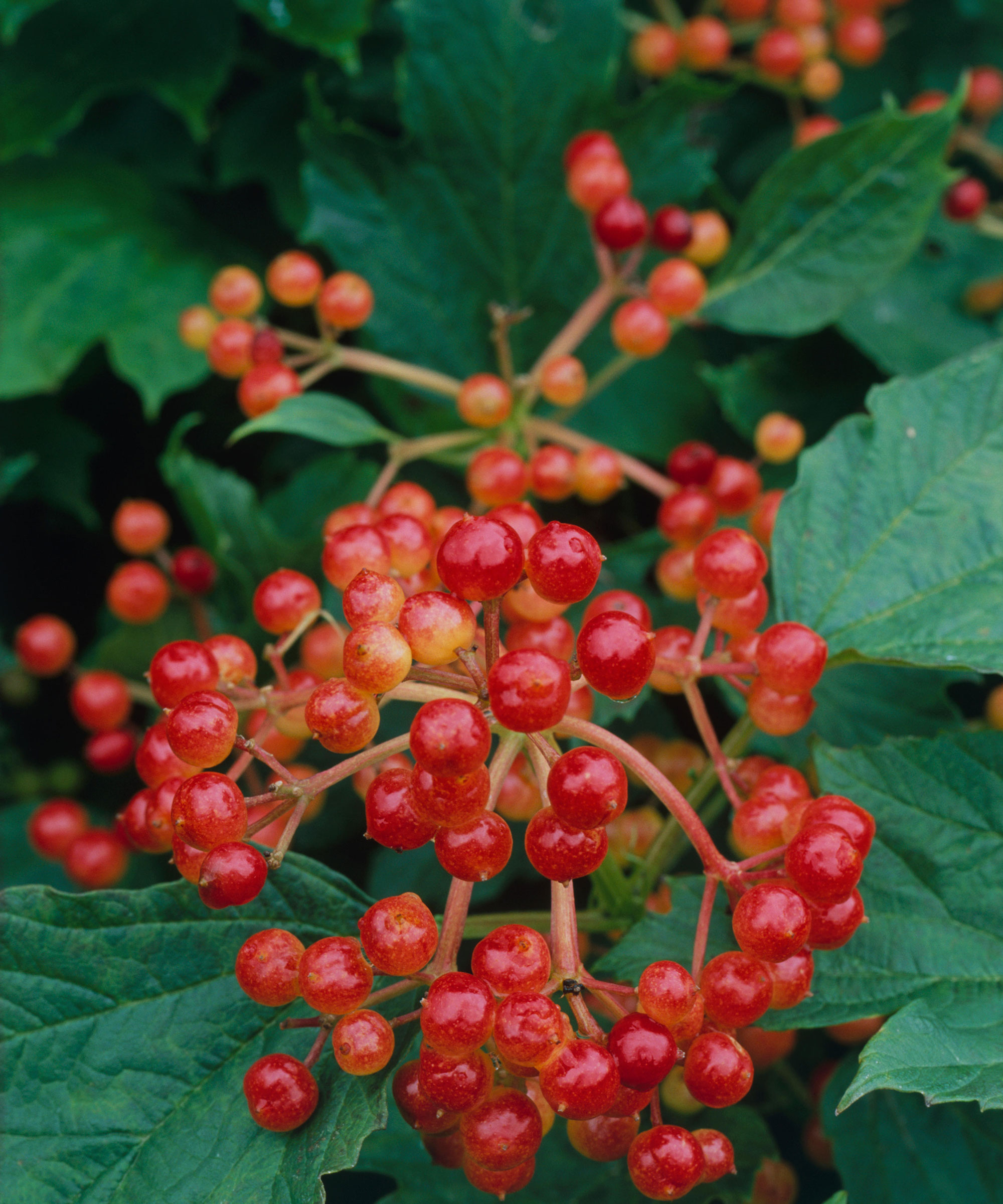
- Hardiness: USDA 3-8 (UK H6)
- Height: 5ft (1.5m)
- Spread: 5ft (1.5m)
This is a smaller variety of the guelder rose, with red autumn berries that are equally as brilliant as the full-size Viburnum opulus. It will add a glowing display to your backyard.
With white, pollinator-friendly blooms in spring and attractive foliage that has good autumn color, it’s a really hard-working shrub that will earn its keep with a long season of interest.
The compact size makes this a great choice for smaller gardens and container gardening, too.
2. Viburnum trilobum 'Wentworth'
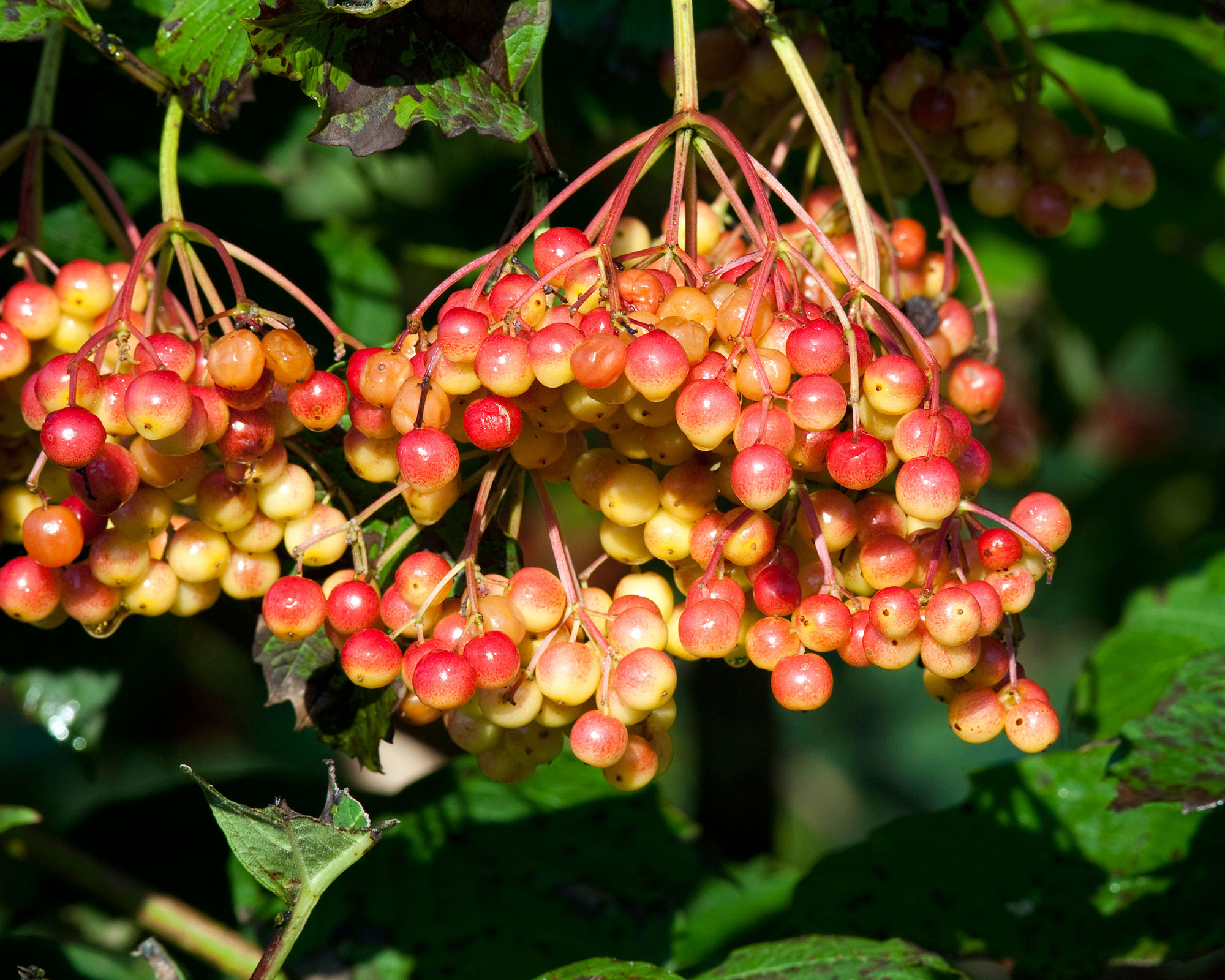
- Hardiness: USDA 2-7 (UK H4)
- Height: 11.5ft (3.5m)
- Spread: 10ft (3m)
Another great fruiting viburnum, also known as the American cranberry, this shrub has bright red, edible fruits that are good for using in jams and preserves.
Perfect for year-round interest, it has attractive, maple-like foliage and plenty of spring flowers. The berries appear in late summer, maturing from yellow to brilliant red through the fall.
It’s easy to grow in most soil types and rarely troubled by pests and disease, making it one of the best low-maintenance shrubs to choose.
3. Euonymus europaeus 'Red cascade'
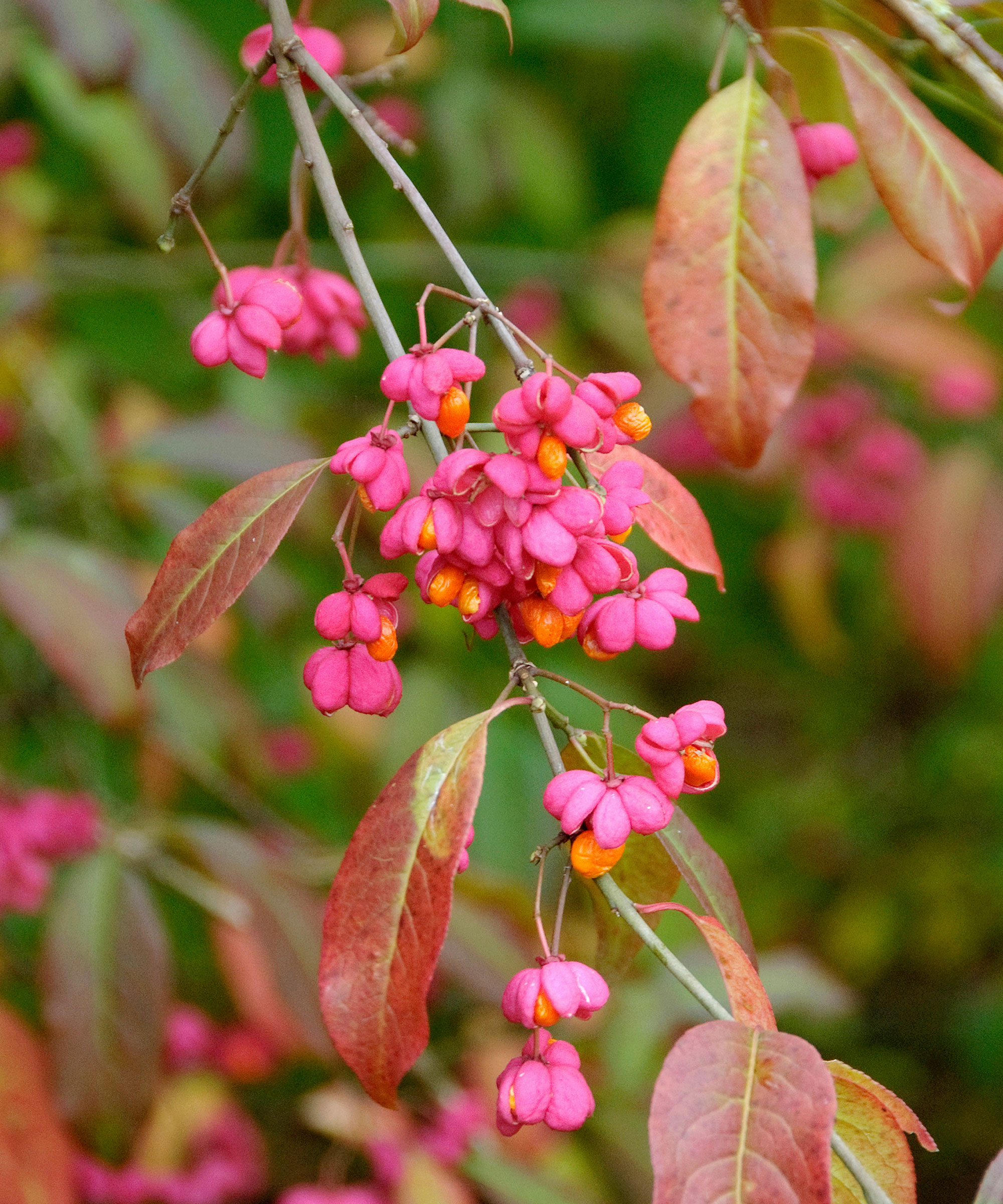
- Hardiness: USDA 4-7 (UK H6)
- Height: 10ft (3m)
- Spread: 8ft (2.4m)
The spindle tree is a large shrub that is a delight to stumble upon in an autumn woodland. The orange berries emerge from brilliant pink cases and come into full force after the red autumn foliage has dropped from the branches.
It makes a good focal point or can provide contrast in a mixed planting scheme. Team with evergreen shrubs as a backdrop for a bright fall display. It suits sun or partial shade, and most soil types.
4. Cotoneaster 'Cornubia'
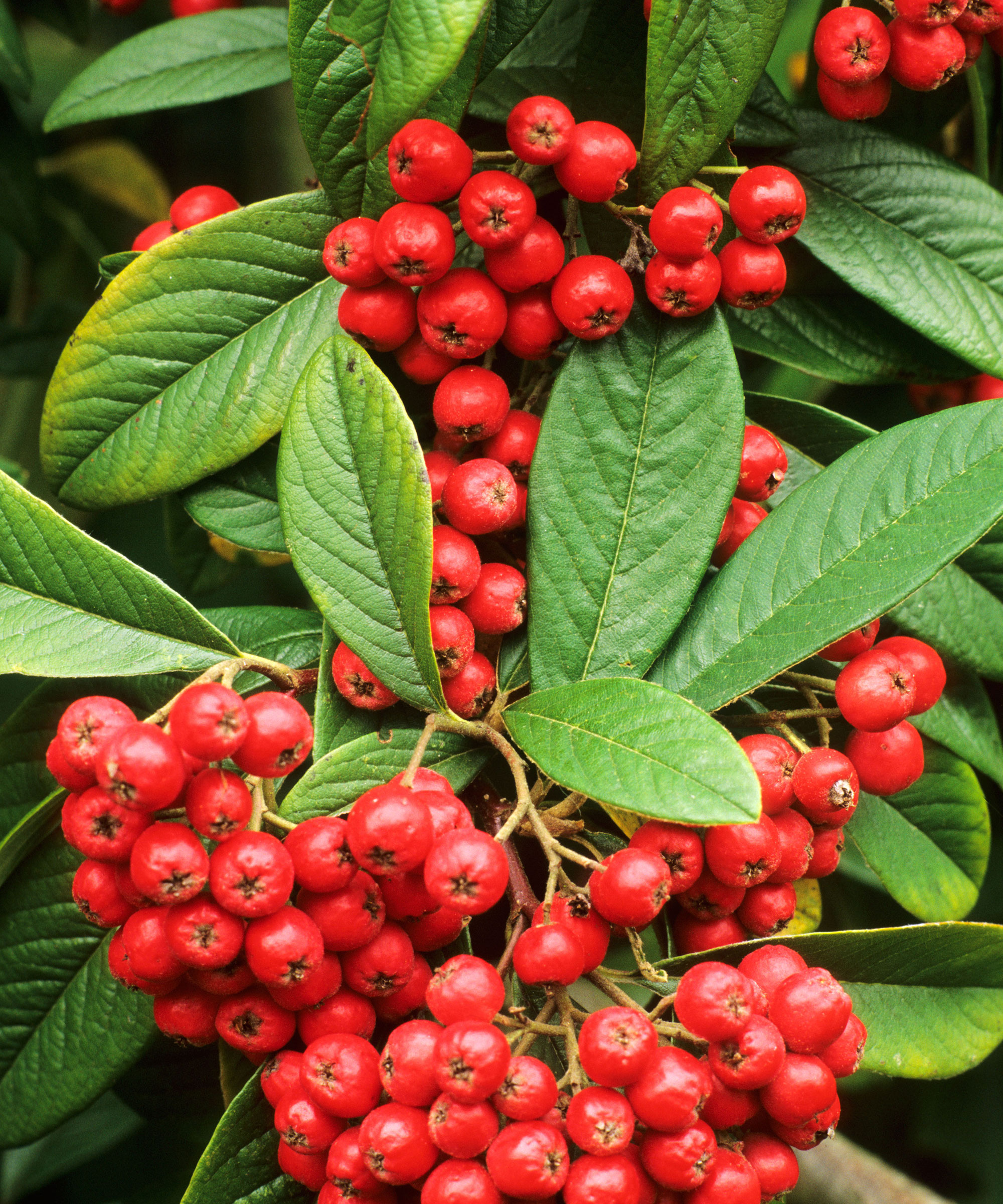
- Hardiness: USDA 4-8 (UK H6)
- Height: 13-26ft (4-8m)
- Spread: 13-26ft (4-8m)
Cotoneaster is one of the best plants to add brilliant autumn color to your garden. A large upright variety with semi-evergreen foliage, 'Cornubia' puts on a fantastic display in fall with abundant clusters of rich, red berries.
The foliage colors up nicely too, so it offers lots of interest at this time of year. Like the best trees with berries, this shrub will keep the bird population happy as they feast on the fruits.
Plant in areas of mixed shrubs or woodland where it will have space to grow and contribute to the wildlife habitat.
5. Gaultheria procumbens
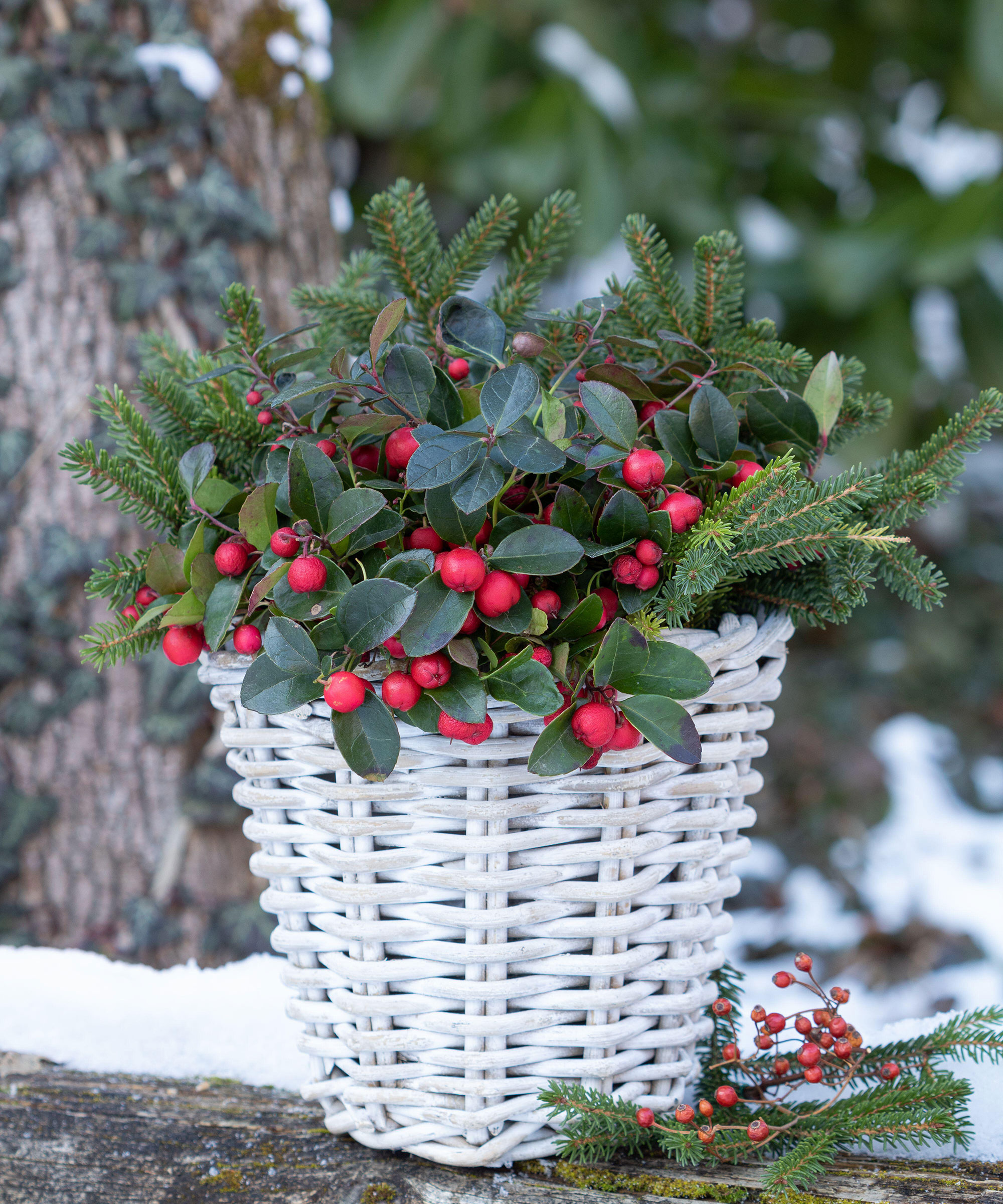
- Hardiness: USDA 3-9 (UK H5)
- Height: 6in (15cm)
- Spread: 3ft (1m)
This is a compact, very low-growing shrub that’s the perfect plant for adding a brilliant autumn glow with its bright red berries and red-tinged evergreen foliage.
Good for fall planter ideas, it will nestle happily in small containers and makes a great table decoration, too. Alternatively, it's one of the best ground cover plants at the front of borders in woodland areas.
It does need an acidic soil type to thrive, so check the pH and use ericaceous compost if needed.
- Buy Gaultheria procumbens in the US: view at Burpee
- Buy Gaultheria procumbens in the UK: view at Gardening Express
6. Ilex verticillata
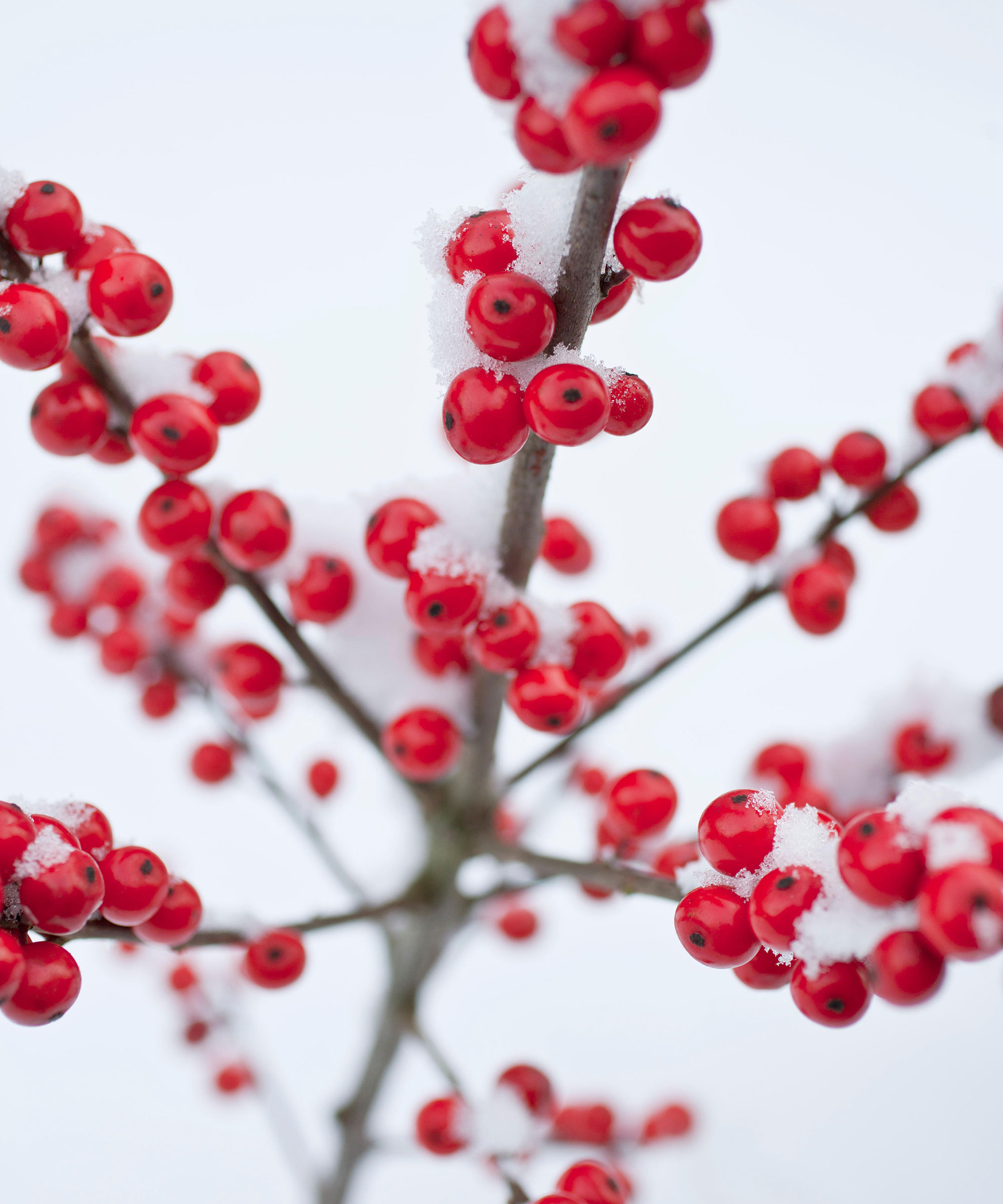
- Hardiness: USDA 3-9 (UK H6)
- Height: 10ft (3m)
- Spread: 3-5ft (1-1.5m)
One of the best plants with winter berries, and also known as winterberry, this really does what it says on the tin. A deciduous shrub, the red berries make a real statement against the dark, bare stems.
Birds love the berries too, but if you can keep some stems intact, they are great for cutting and using as winter decorations. The trimmed stems are a favorite with florists and often find their way into Christmas displays.
It's a large shrub when it's grown to full size, so give it plenty of room to grow.
7. Pyracantha 'Saphyr Orange'
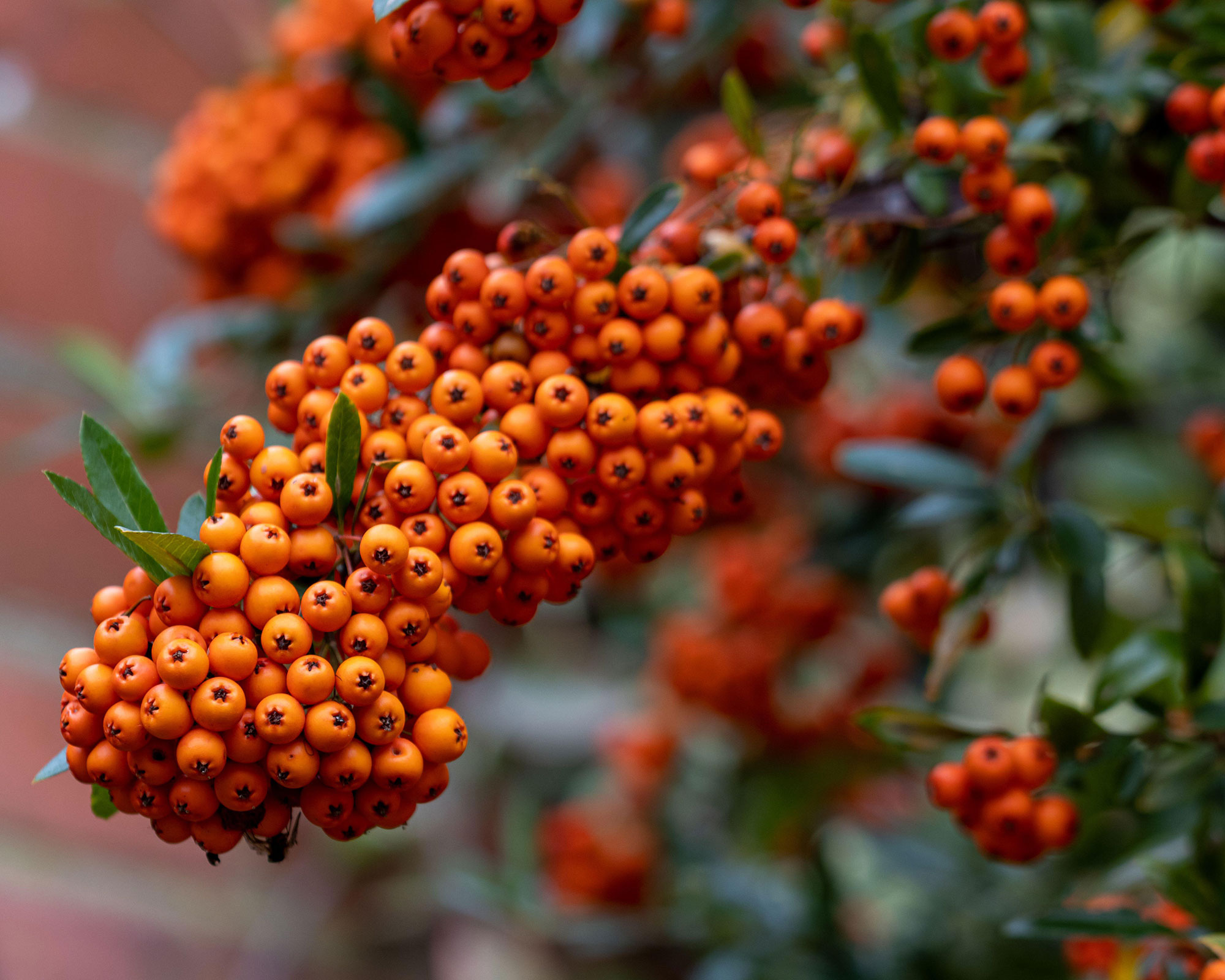
- Hardiness: USDA 5-9 (UK H6)
- Height: 5-8ft (1.5-2.5m)
- Spread: 5-8ft (1.5-2.5m)
Pyracanthas are great for the profusion of bright berries they produce from September onwards, and that's where they get their alternative name of firethorn from.
Typically, pyracanthas have red berries, but the cultivar ‘Saphyr Orange’ has brilliant orange fruits that look even more vibrant against the dark evergreen foliage.
It's one of the best shrubs with berries to plant against a wall, but can also be grown as a hedging plant. It can also thrive as a freestanding shrub.
8. Chilean guava (strawberry myrtle)
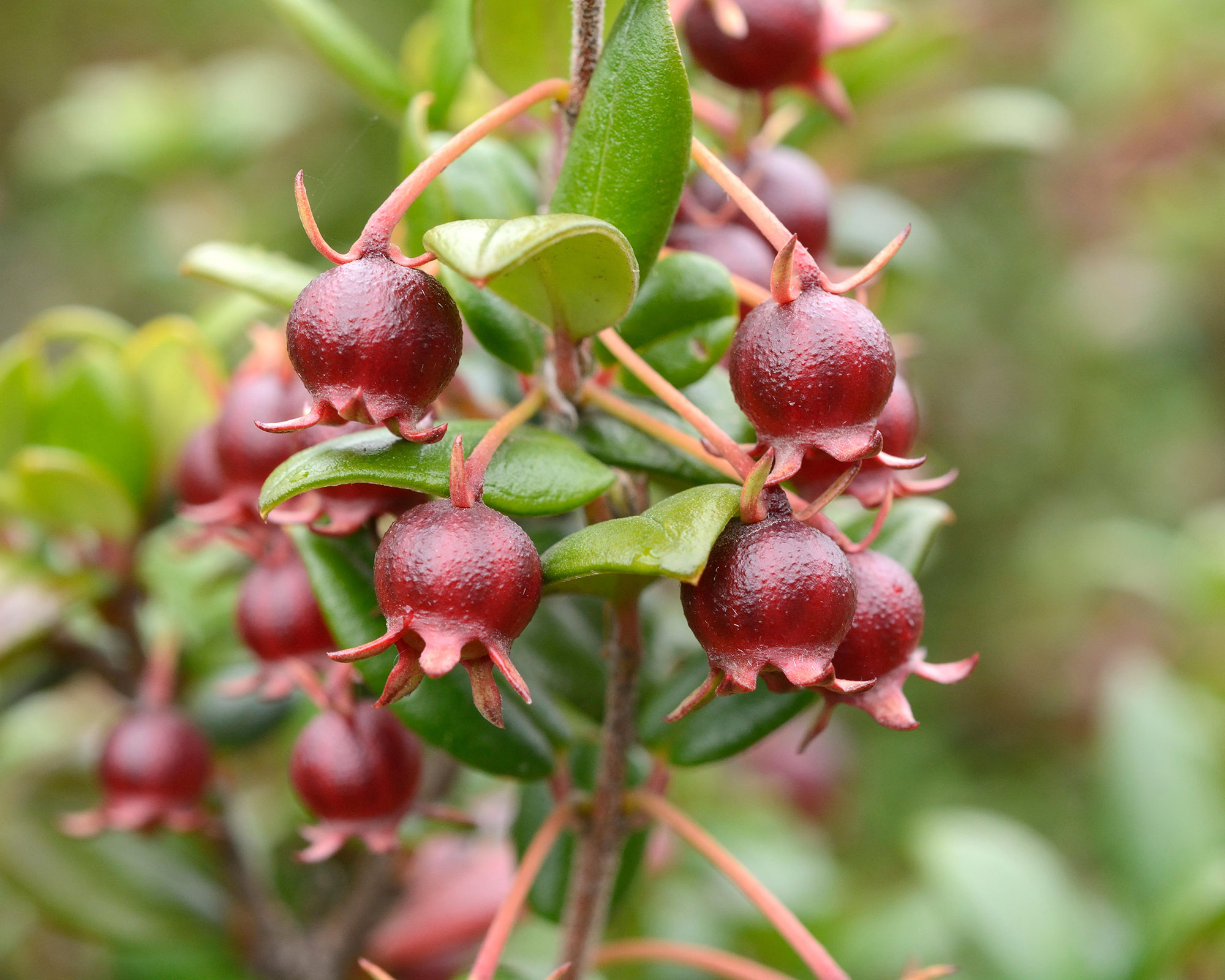
- Hardiness: USDA 9-10 (UK H4)
- Height: 3-5ft (1-1.5m)
- Spread: 1.5-3ft (0.5-1m)
Ugni molinae (also known as the Chilean guava and the strawberry myrtle) is a pretty shrub with evergreen foliage and early summer flowers that turn into sweet red berries in fall.
Being compact in size, it's one of the best plants for small gardens, as well as a great choice for pots. The berries have a strawberry flavor and taste great eaten raw, plucked straight from the plant, or are equally good used in jams and cakes.
9. Aronia arbutifolia 'Brilliant'
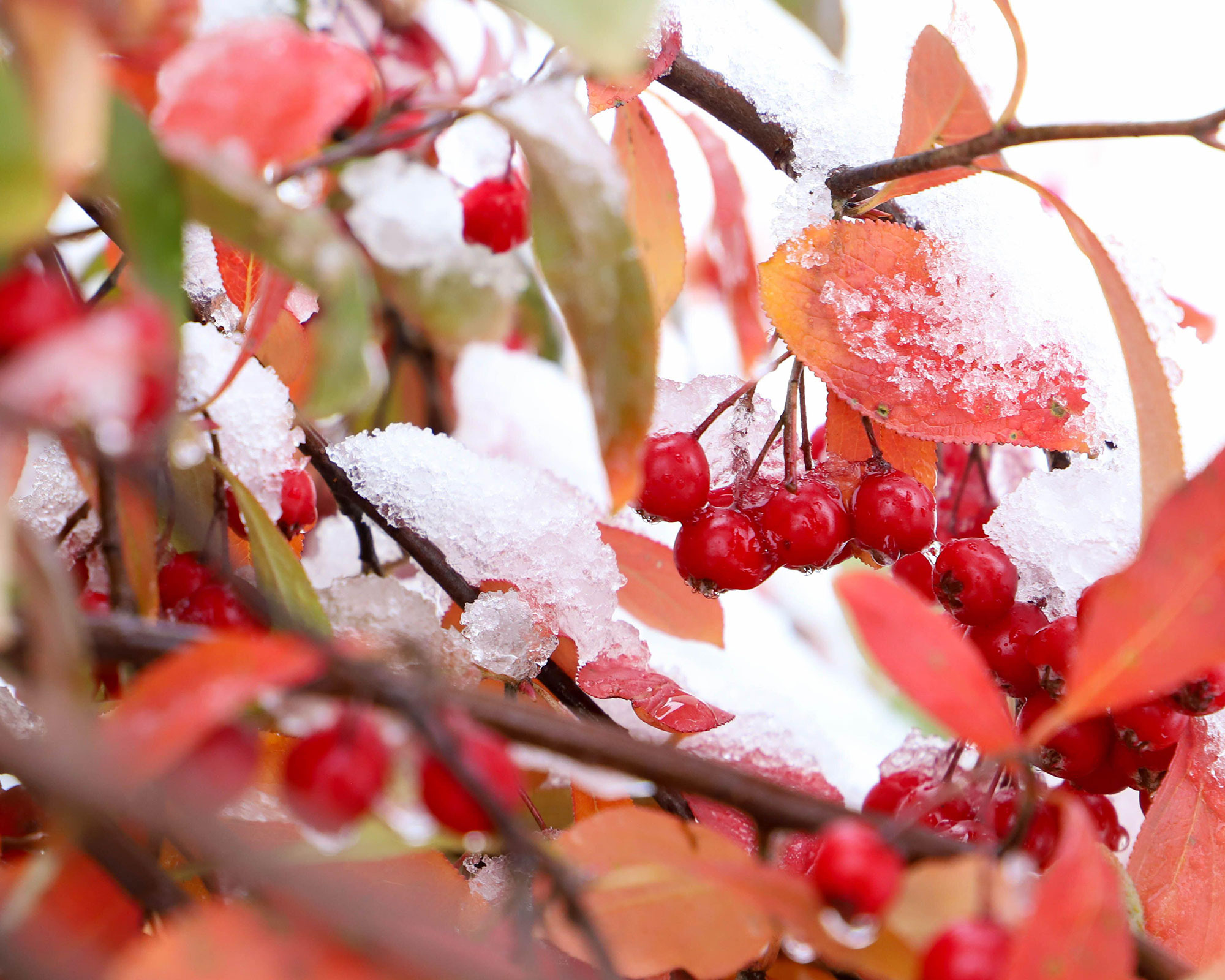
- Hardiness: USDA 4-9 (H7)
- Height: 8ft (2.5m)
- Spread: 4ft (1.5m)
The red chokeberry is a fantastic shrub for fall, bringing a stunning combination of brilliant foliage color and dark red berries to the garden.
It’s a good all-round performer in other seasons, with white summer flowers that are also eye-catching and loved by seasonal wildlife. The berries can be used to make jams, jellies or tarts.
White berries
10. Symphoricarpos albus
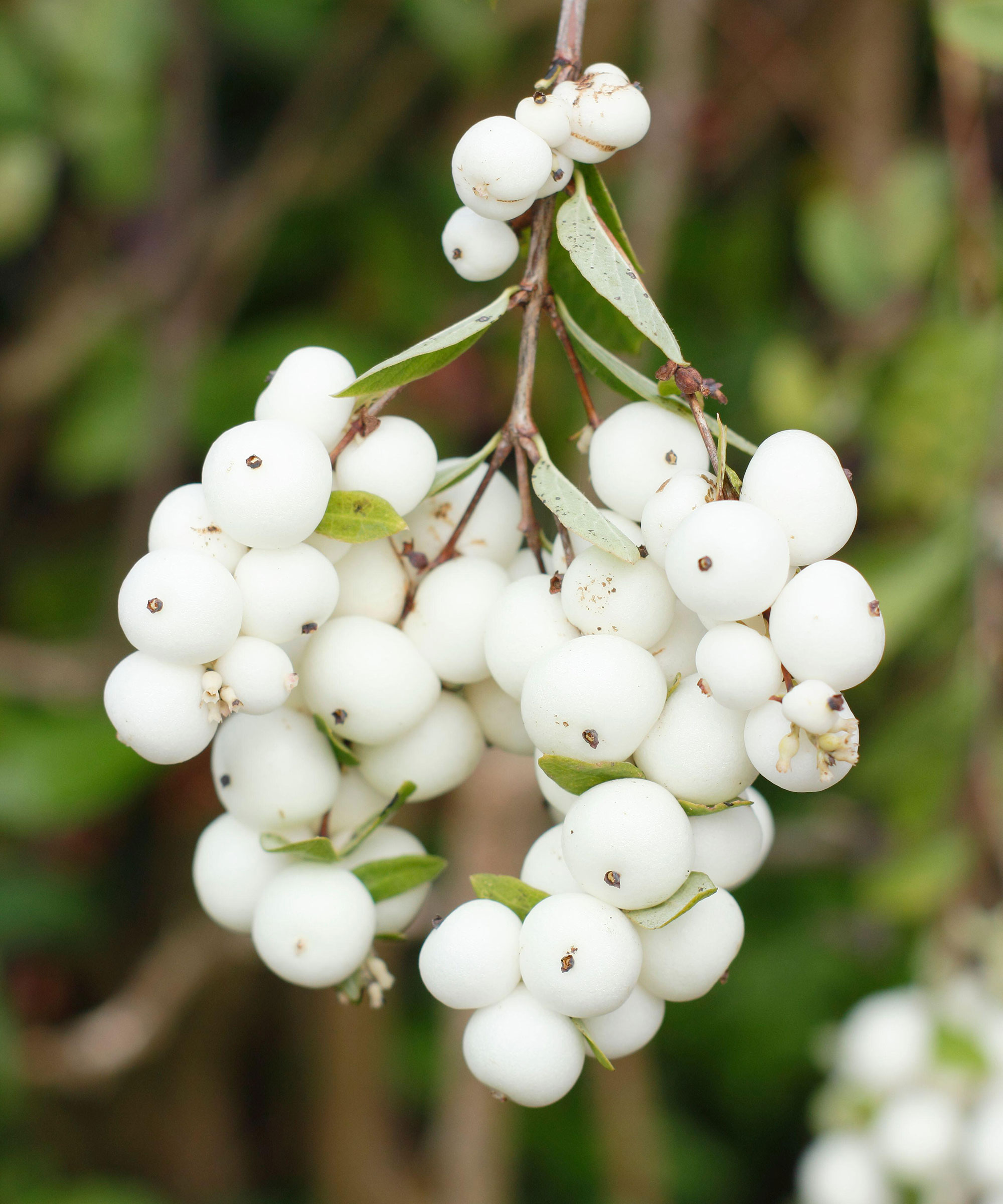
- Hardiness: USDA 3-7 (UK H6)
- Height: 6ft (2m)
- Spread: 5ft (1.5m)
The common snowberry produces milky white fruits that make a great ornamental feature in the winter garden. Although it doesn’t wow the rest of the year, it’s a tough shrub and a good choice for poor soils and all aspects and is good in polluted areas, too.
Use it in a mixed border or as an informal hedge. It's one of the best fast-growing shrubs as it shoots up and grows tall, so it’s better in larger gardens with plenty of space. Plant alongside Rubus cockburnianus (white stemmed bramble) for a stunning display.
11. Gaultheria mucronata 'Snow White'
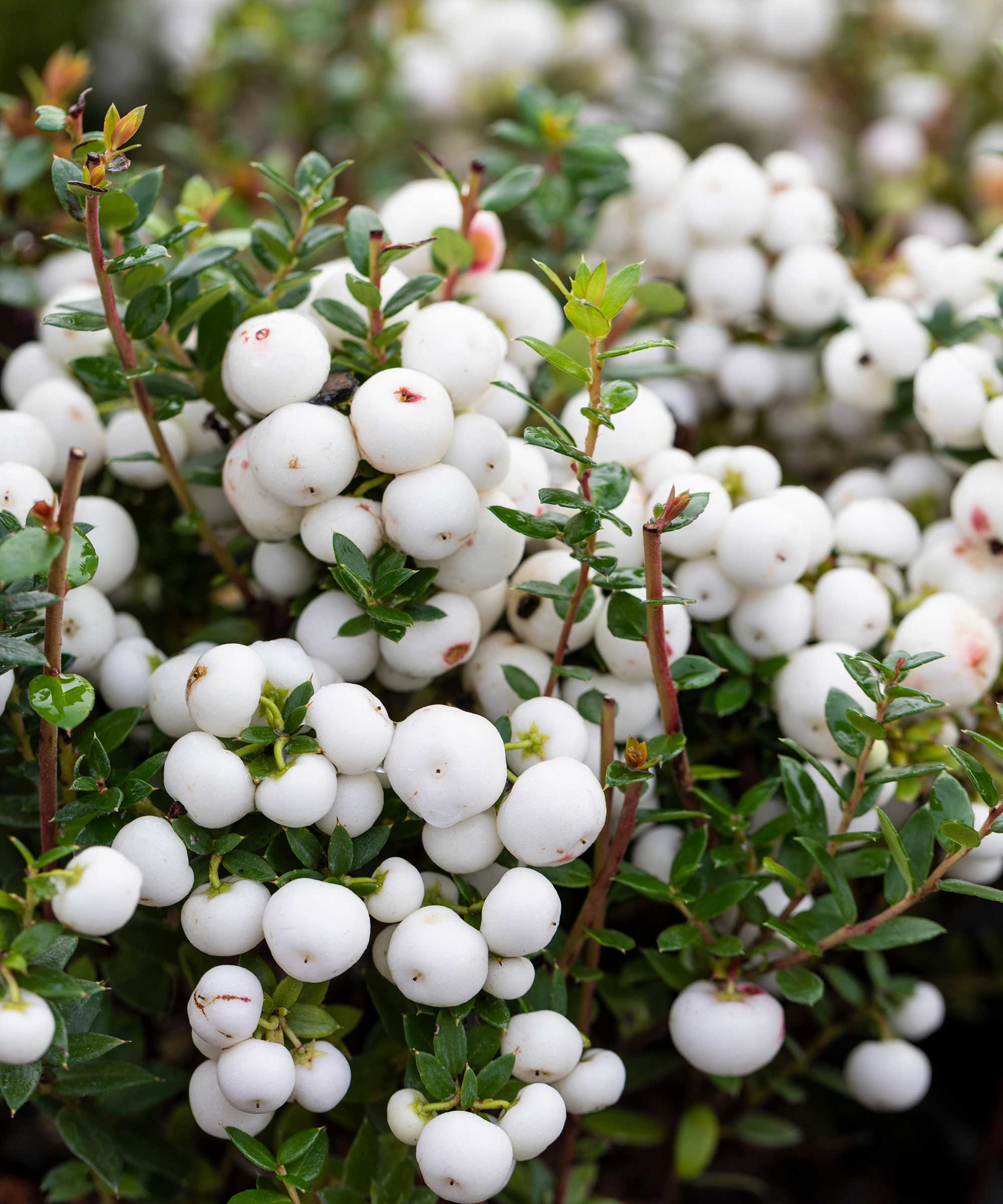
- Hardiness: USDA 3-9 (H6)
- Height: 5ft (1.5m)
- Spread: 5ft (1.5m)
Formerly named pernettya, this is also known as boxberry. It’s a compact shrub with glossy, evergreen foliage and brilliant white winter berries. It does need to be planted in male and female pairs to cross-fertilize and fruit successfully.
The male form is Gaultheria mucronata ‘Mascula’ and is less attractive than its partner. It needs acid soil but can be grown in a container if your soil type doesn’t fit the bill.
12. Hypericum x indodorum 'Magical White'
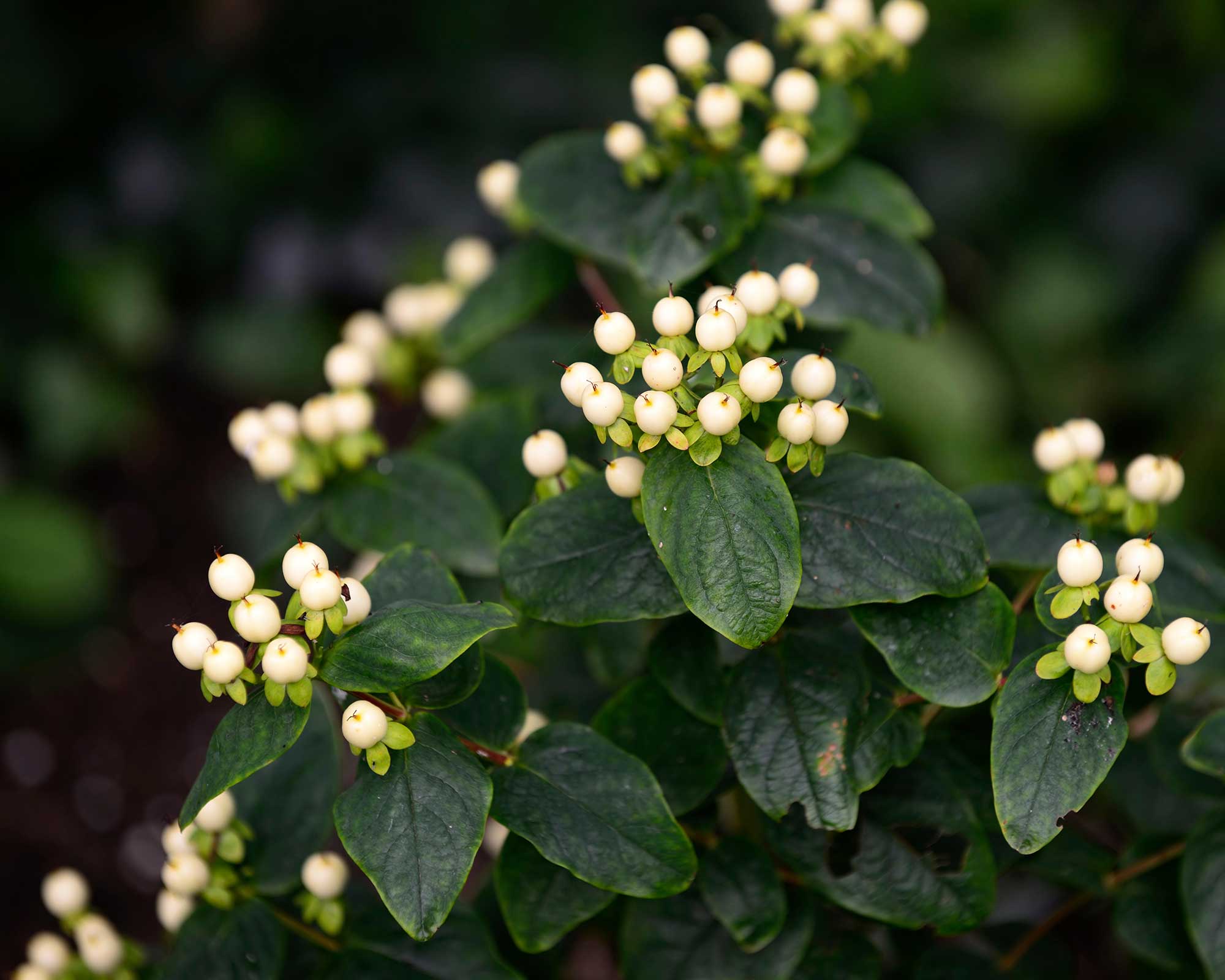
- Hardiness: USDA 6-9 (H5)
- Height: 2ft (60cm)
- Spread: 3ft (90cm)
Also known as St John’s Wort, hypericum is a great small shrub for year-round interest. This variety has a lot of ornamental value with semi-evergreen foliage that colors up in the fall and typical starry yellow flowers that are the precursor to the white berries in fall.
It’s a good choice for containers and the front of borders in sun or shade as part of your garden border planting ideas, and is relatively trouble-free to grow. It's also prized for cut flower mixes, so is a good feature to include in your cutting garden.
Blue and purple berries
13. Viburnum davidii
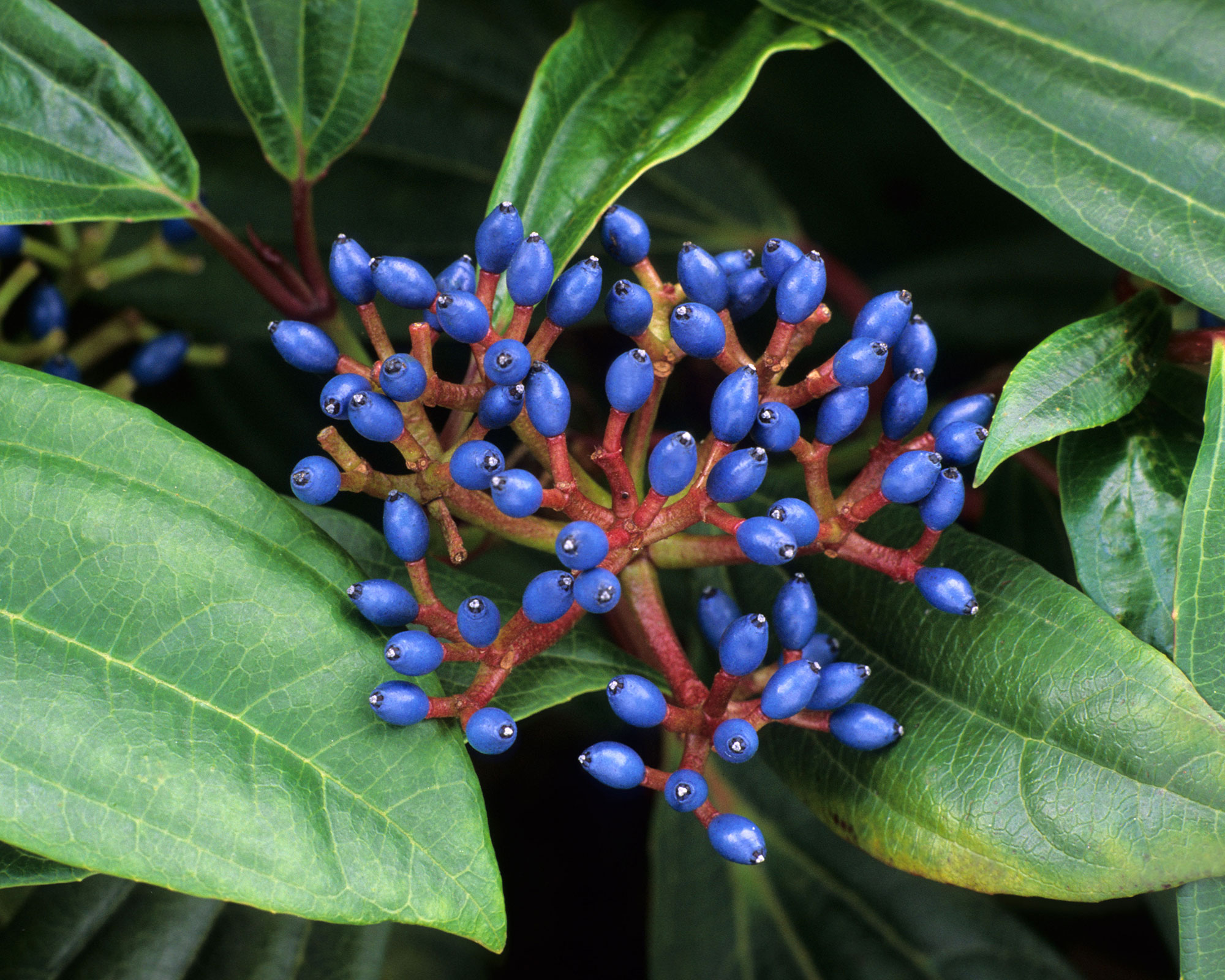
- Hardiness: USDA 7-9 (UK H5)
- Height: 5ft (1.5m)
- Spread: 5ft (1.5m)
Plant male and female pairs of this stalwart evergreen viburnum for a more subtle fall berry display. The bright metallic blue fruits are held on reddish stems and make a fascinating textural contrast against the dark, ribbed foliage.
It’s a medium-sized, relatively compact shrub with a neat, domed form. Tolerant of shade and sun, it works well in mixed borders. Planted near the front, it will provide good interest all year round.
- Buy Viburnum davidii in the US: view at Nature Hills
- Buy Viburnum davidii in the UK: view at Gardening Express
15. Prunus spinosa
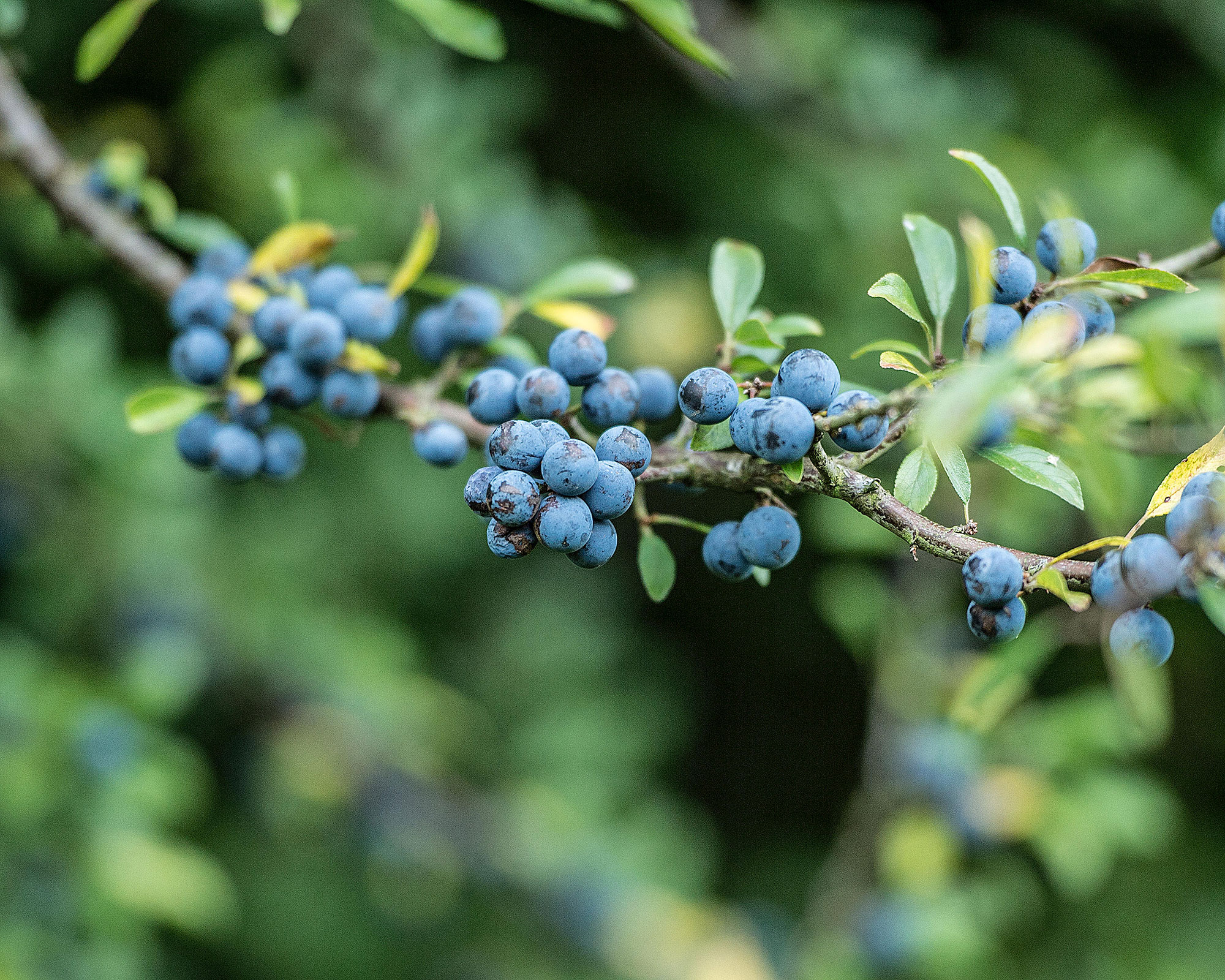
- Hardiness: USDA 4-8 (UK H7)
- Height: 8-13ft (2.5-4m)
- Spread: 8-13ft (2.5-4m)
Technically this will grow into a tree, but it’s most commonly found as a shrub in natural, mixed hedging and is prized for its dark purple sloe berries in fall, which are used as edible fruits and for making sloe gin.
It has very thorny stems, so be careful when picking them. The sparkling springtime white flowers have added seasonal interest and it’s a great plant for wildlife, offering food and habitats for birds and insects.
15. Callicarpa bodinieri giraldii 'Profusion'
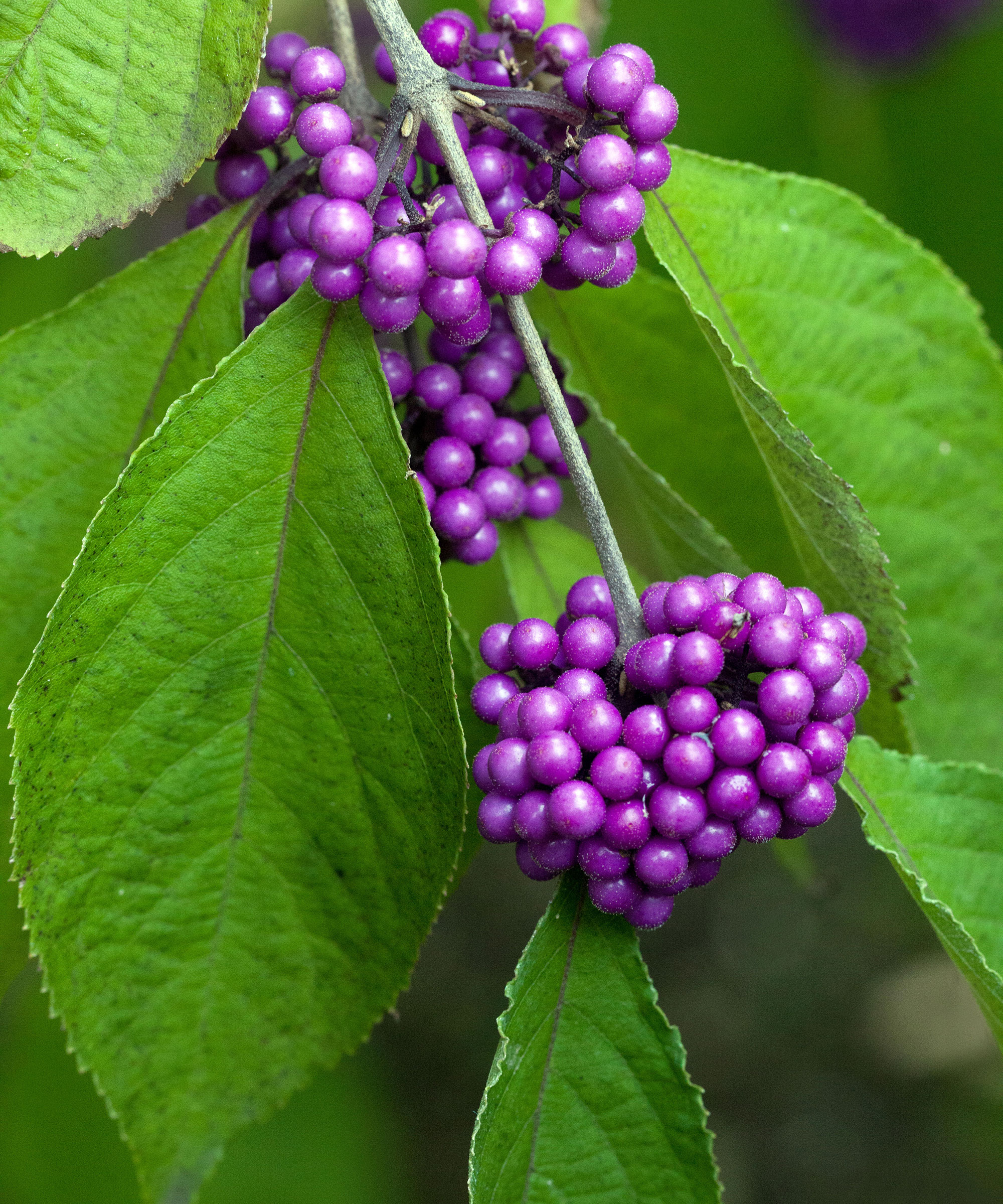
- Hardiness: USDA 5-8 (UK H6)
- Height: 8-13ft (2.5-4m)
- Spread: 5-8ft (1.5-2.5m)
Also known as beauty berry, this is one of the most distinctive fall shrubs around. With attractive young foliage and summer flowers, it's one of the best plants for pollinators too.
The real wow-moment comes late in the year, though, when it's covered with a profusion of small, tightly-packed, blue-purple berries.
Better suited to neutral to acid soil, it looks great planted in groups in a sunny, mixed border, but also works well on its own in a large container.
What are the best shrubs for black berries?
While brighter-colored berries are prized for their ornamental value – such as holly for winter decorations – black berries offer a more unusual and dramatic effect.
Sambucus nigra is a large shrub or small tree, depending on how rigorously you prune it. And, if you don’t use all the pretty white elderflowers for making your own cordial, you will be rewarded with clusters of dark black berries, which look striking. These are edible when cooked, and are prized for making jellies, syrups and fruit wines or cordials.
Some plants produce black berries later in the season, with fruit darkening as it ripens. While it’s not especially noted for its autumn fruits, Viburnum rhytidophyllum has red autumn berries that turn black. Rosa spinosissima also makes an impact with fat, spherical black hips and Fatsia japonica flowers produce stunning black berries in midwinter.
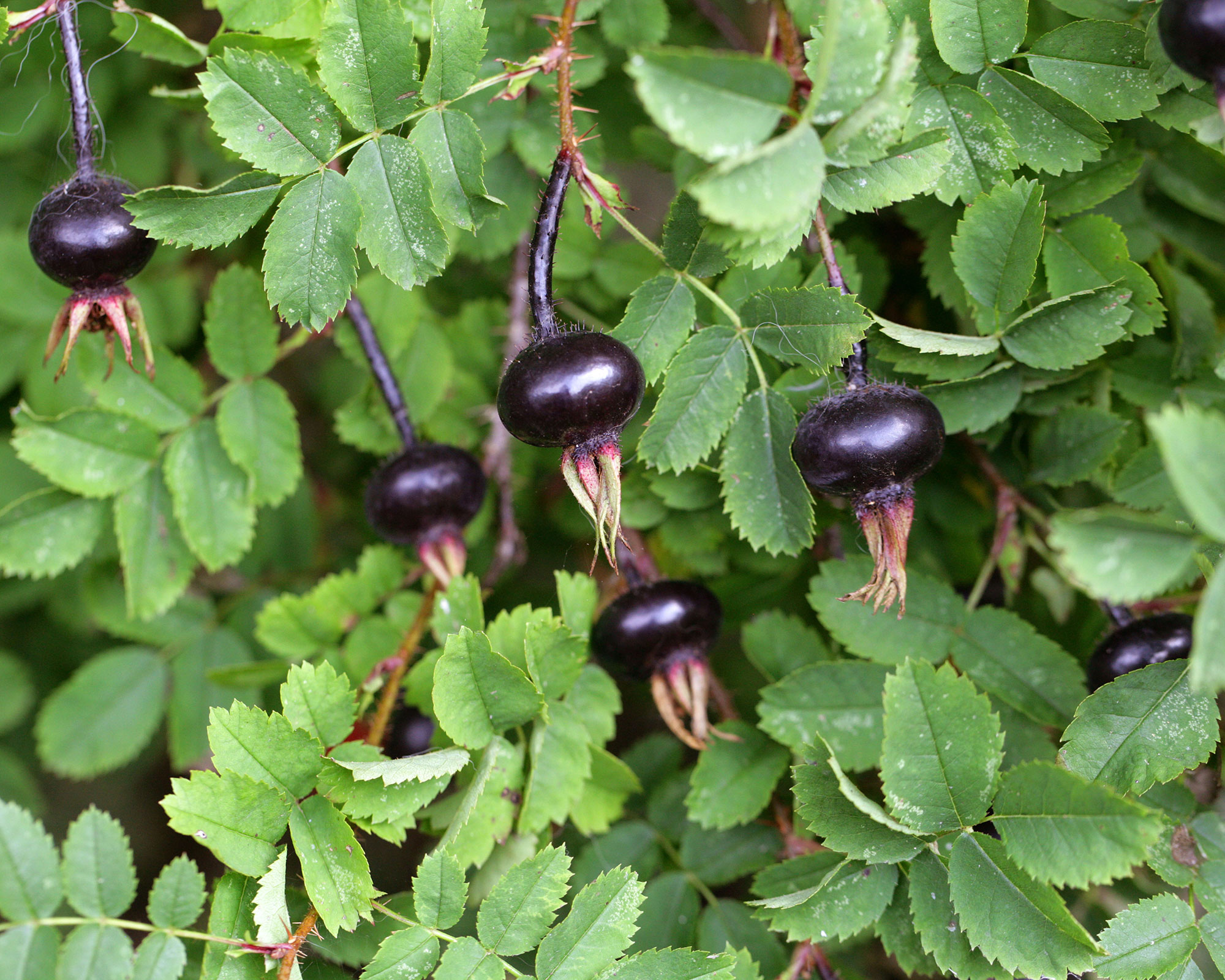
The shiny large black hips of Rosa spinosissima
Which shrubs have pink berries?
Also sought after and quite unusual are shrubs with pink berries. Among the best examples are Gaultheria mucronata 'Crimsonia' which produces white flowers followed by pink autumn berries. These look great contrasted against the shrub’s evergreen foliage. Try it as a plant for winter pots.
Symphoricarpos doorenbosii 'Mother of Pearl' is a snowberry cultivar with delicately flushed strawberry-pink fruits, rather than pure white.
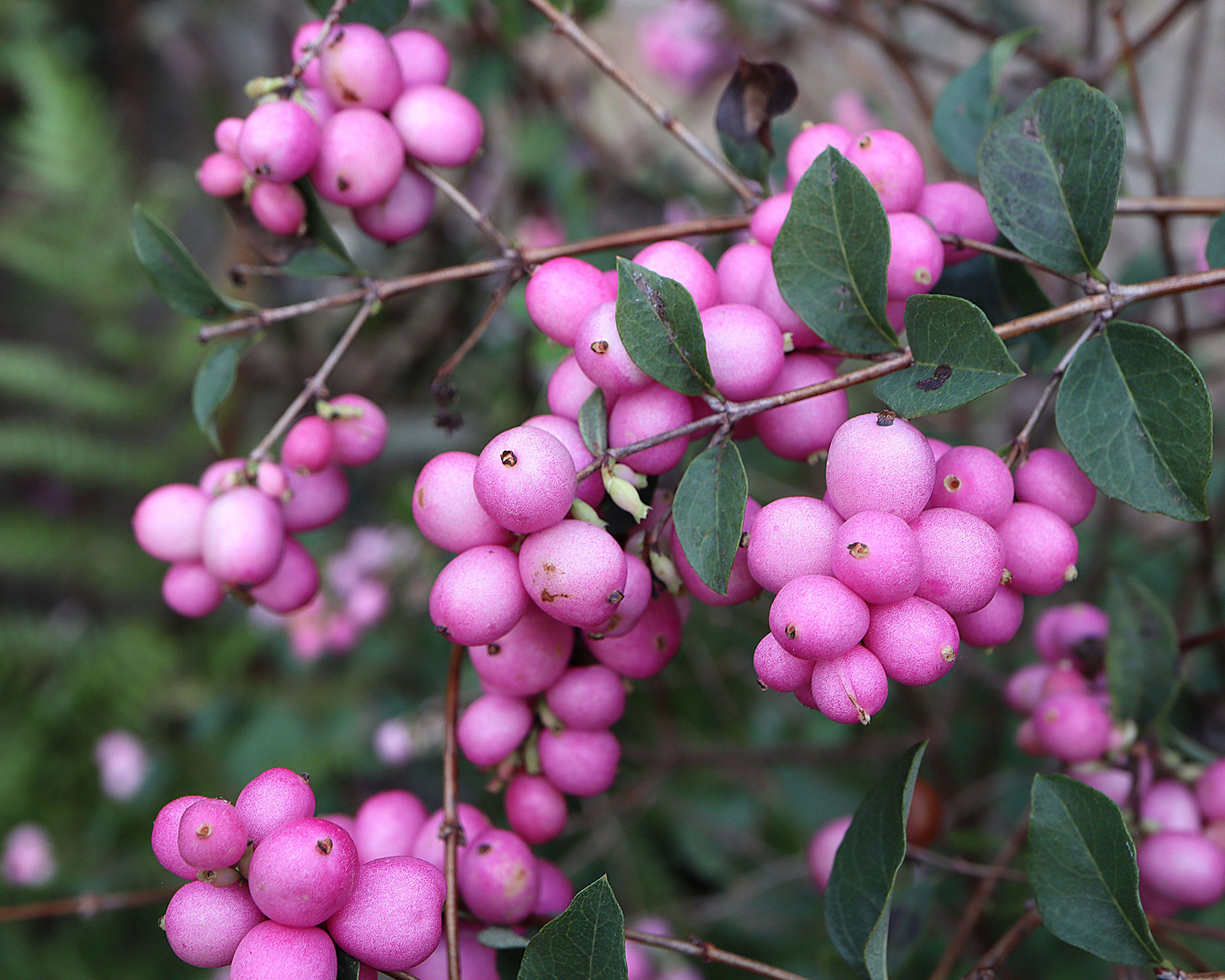
The pink berries of 'Mother of Pearl' are highly decorative

In her years of gardening, Camilla has designed planting schemes for gardens large and small in and around London, written about plants and how to grow them, and worked on BBC gardening TV shows. She's passionate about sharing tips, advice and the joy of plants in this great community of gardeners that we’re all part of, and she now also works as a therapeutic horticulturist, teaching growing for wellbeing and mental health. Her unfulfilled ambition is to crack the ultimate dog-friendly garden - she thinks getting it right depends more on the dog than the plants...
